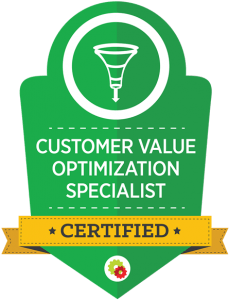E-commerce SEO: Optimizing Product Pages for Maximum Sales
In the highly competitive world of e-commerce, having an attractive product catalog is only half the battle. To drive traffic and boost sales, your product pages must be optimized for search engines—a strategy known as E-commerce SEO (Search Engine Optimization). Properly optimized product pages not only help improve your site’s ranking on search engines like Google but also enhance the user experience, making it easier for customers to find, explore, and buy your products. In this comprehensive guide, we will explore the best practices for optimizing your e-commerce product pages to maximize sales, increase visibility, and outperform your competition.
For e-commerce businesses, every product page is an opportunity to convert a visitor into a paying customer. However, without proper optimization, even the most well-designed product pages can remain invisible to search engines and, consequently, potential buyers. E-commerce SEO focuses on enhancing your product pages’ visibility in search results, ensuring that when customers search for products like yours, they find your website first. This involves a combination of keyword optimization, high-quality content, technical SEO, and user experience improvements that collectively drive traffic and boost conversions.
Whether you’re new to e-commerce SEO or looking to refine your current strategy, this guide will provide you with actionable insights to help your product pages rank higher and sell more.
Why E-commerce SEO Matters for Product Pages
E-commerce SEO is essential because it directly impacts your website’s ability to attract and convert visitors. Here’s why optimizing your product pages for SEO is crucial:
- Increased Organic Traffic: Optimized product pages rank higher in search results, driving more organic traffic to your site without the cost of paid advertising.
- Higher Conversion Rates: Well-optimized pages offer a better user experience, guiding visitors smoothly from browsing to purchase.
- Enhanced User Experience: SEO improvements like faster page speeds, mobile optimization, and clear product information enhance the shopping experience, encouraging repeat visits.
- Improved Brand Visibility: High-ranking pages increase brand exposure, making your store the go-to option for relevant searches.
- Competitive Advantage: Effective SEO can help you outperform competitors, especially in crowded markets, by capturing more search traffic.
Key Elements of E-commerce Product Page SEO
Optimizing product pages for SEO requires a multi-faceted approach that addresses both search engine algorithms and user needs. Here are the key elements of e-commerce SEO that you need to focus on:
Keyword Research and Optimization
Keyword research is the foundation of SEO, helping you identify the terms and phrases potential customers use when searching for products. Optimizing your product pages with the right keywords ensures that your pages match search intent, increasing the likelihood of appearing in relevant search results.
- Identify Primary Keywords: Choose keywords that accurately describe your product. Use tools like Google Keyword Planner, Ahrefs, or SEMrush to find high-volume, low-competition keywords.
- Long-Tail Keywords: Target long-tail keywords—specific phrases that are less competitive but highly relevant to your products, such as “black leather ankle boots for women.”
- Keyword Placement: Integrate your primary keywords naturally into key areas of the product page, including the title, meta description, product description, headings, and image alt text.
Compelling Product Titles and Meta Descriptions
Product titles and meta descriptions are critical for both SEO and user engagement. They are the first things users see in search results and play a significant role in driving clicks.
- Craft SEO-Friendly Product Titles: Include the primary keyword, product name, and key attributes (like color, size, or model) in the title. Keep it clear, concise, and descriptive.
- Write Engaging Meta Descriptions: Use meta descriptions to highlight key selling points, including keywords naturally. Focus on what makes the product unique and include a call-to-action (CTA) to entice users to click.
High-Quality, Unique Product Descriptions
A well-written product description does more than just inform; it persuades. Unique and engaging descriptions can set your products apart from the competition and are essential for SEO.
- Avoid Manufacturer Copy: Duplicate content can harm your SEO. Write unique descriptions that provide value and highlight the benefits of your products.
- Use Descriptive, Persuasive Language: Describe the product’s features, benefits, and use cases. Focus on how it solves the customer’s problem or meets their needs.
- Include Keywords Naturally: Use primary and secondary keywords throughout the description, but avoid keyword stuffing. The text should read naturally and provide a clear, engaging narrative.
Optimize Product Images
Images are crucial for e-commerce but can also impact SEO. Properly optimized images enhance the user experience and contribute to better search rankings.
- Use High-Quality Images: Ensure your images are clear, high-resolution, and showcase the product from multiple angles.
- Add Descriptive Alt Text: Alt text helps search engines understand what the image depicts. Include relevant keywords in the alt text without overloading it with unnecessary terms.
- Compress Image File Sizes: Large images can slow down your page load times, negatively affecting SEO. Use tools like TinyPNG or ImageOptim to compress images without losing quality.
Fast Page Load Speed
Page speed is a critical factor for both SEO and user experience. Slow-loading pages can frustrate users, leading to higher bounce rates and lower conversions.
- Minimize HTTP Requests: Reduce the number of elements on your page, such as scripts, images, and CSS, to speed up load times.
- Use Lazy Loading: Lazy loading delays the loading of non-critical images until they are needed, improving page speed and reducing initial load times.
- Optimize Code: Minify CSS, JavaScript, and HTML files to reduce their size and improve load speed.
Mobile Optimization
With the majority of online shopping now happening on mobile devices, ensuring your product pages are mobile-friendly is essential for SEO.
- Responsive Design: Ensure your product pages adapt seamlessly to different screen sizes, providing a smooth experience on smartphones and tablets.
- Simplify Navigation: Make it easy for mobile users to find what they’re looking for with clear, accessible menus and intuitive navigation.
- Streamlined Checkout Process: Optimize the checkout process for mobile users by minimizing steps and ensuring forms are easy to complete on small screens.
Internal Linking and Navigation
Internal links help distribute page authority across your site, guide users to relevant products, and improve SEO by making your content easier for search engines to crawl.
- Link to Related Products: Encourage cross-selling by linking to related or complementary products on each product page.
- Use Descriptive Anchor Text: Use anchor text that clearly describes the linked content, helping users and search engines understand the context.
Product Reviews and User-Generated Content
Reviews provide social proof, build trust, and offer unique content that can boost your SEO. Encouraging customers to leave reviews on your product pages adds fresh, keyword-rich content that can improve search rankings.
- Encourage Customer Reviews: Request reviews after purchase via email reminders or incentives like discounts on future purchases.
- Display Reviews Prominently: Showcase reviews near the product description to make them easily accessible and influence purchasing decisions.
Schema Markup for Product Pages
Schema markup is a form of structured data that helps search engines better understand your content. Adding schema markup to your product pages can enhance your search listings with rich results, such as star ratings, price, availability, and product images.
- Implement Product Schema: Use schema markup to display product details directly in search results, increasing click-through rates.
- Include Reviews and Ratings: Adding review schema can display star ratings in search results, enhancing credibility and attracting clicks.
Best Practices for E-commerce SEO on Product Pages
Implementing SEO best practices on your product pages can significantly improve your search engine rankings and drive more sales. Here are the top strategies to maximize your product page performance:
1. Create Unique Product Descriptions
Avoid using manufacturer-provided descriptions, as these are often duplicated across multiple websites. Craft unique descriptions that highlight your product’s key features, benefits, and value proposition. This not only improves SEO but also differentiates your products from competitors.
2. Use High-Quality, Optimized Images
Images are a crucial part of the customer’s buying decision. Ensure your images are clear, high-quality, and optimized with relevant alt text that includes keywords. Consider using multiple images to showcase the product from different angles.
3. Optimize for Voice Search
With the rise of voice-activated search devices, optimizing for voice search is becoming increasingly important. Use natural language and long-tail keywords that match conversational search queries. For example, instead of just “running shoes,” consider phrases like “best running shoes for flat feet.”
4. Incorporate Customer Reviews and Ratings
Customer reviews provide unique, user-generated content that can boost SEO and build trust with potential buyers. Encourage customers to leave reviews and display them prominently on your product pages.
5. Implement Clear Calls-to-Action (CTAs)
Your CTAs should be clear, compelling, and easy to find. Use action-oriented language such as “Add to Cart,” “Buy Now,” or “Get Yours Today.” Ensure your CTA buttons are visually distinct and easily accessible on both desktop and mobile devices.
6. Use Breadcrumbs for Easy Navigation
Breadcrumbs are navigational aids that show users their current location on your site. They improve the user experience, reduce bounce rates, and make your site easier for search engines to crawl.
7. Test and Optimize Continuously
E-commerce SEO is not a one-time task. Regularly test different elements of your product pages, such as titles, descriptions, images, and CTAs, to identify what drives the best results. Use A/B testing tools to make data-driven decisions that enhance your page performance.
Common Mistakes to Avoid in E-commerce Product Page SEO
Avoiding common SEO mistakes can save you time and ensure your product pages are fully optimized for maximum impact. Here are some pitfalls to watch out for:
Duplicate Content
Using the same descriptions or content across multiple product pages can harm your SEO. Always create unique content for each page to avoid duplicate content penalties.
Neglecting Technical SEO
Technical SEO elements like page speed, mobile optimization, and structured data are crucial for search rankings. Regularly audit your site to identify and fix technical issues that could affect performance.
Keyword Stuffing
Overloading your product pages with keywords can make them feel spammy and harm your SEO. Focus on using keywords naturally within high-quality content that provides value to the user.
Ignoring Image SEO
Images are often overlooked in SEO, but they play a critical role in enhancing page performance. Optimize image file names, alt text, and sizes to improve load speed and visibility in image searches.
Slow Page Load Times
A slow-loading product page can drive customers away and hurt your search rankings. Optimize your page speed with techniques like image compression, code minification, and faster hosting solutions.
FAQs
What is E-commerce SEO?
E-commerce SEO is the process of optimizing your online store to rank higher in search engine results, driving more organic traffic and sales.
Why is optimizing product pages important for SEO?
Optimizing product pages improves your search rankings, enhances the user experience, and increases the likelihood of converting visitors into buyers.
How do I choose the right keywords for my product pages?
Use tools like Google Keyword Planner, Ahrefs, or SEMrush to identify relevant, high-traffic keywords that match your product and target audience.
What role do images play in product page SEO?
Images enhance the user experience and can improve SEO when optimized with high-quality visuals, descriptive alt text, and fast load times.
How can I improve my product page load speed?
Improve load speed by compressing images, reducing the number of HTTP requests, using lazy loading, and optimizing code.
What is schema markup, and why is it important for product pages?
Schema markup is structured data that helps search engines understand your content. It enhances search listings with rich results, like star ratings and product details, increasing click-through rates.
Conclusion
Optimizing your e-commerce product pages for SEO is a critical step in maximizing sales and enhancing your online visibility. By implementing best practices such as keyword optimization, unique product descriptions, fast load times, and mobile-friendly design, you can create product pages that not only rank higher in search results but also provide an exceptional user experience. Remember, SEO is an ongoing process that requires continuous testing, refinement, and adaptation to keep up with changing search algorithms and customer expectations. Start optimizing your product pages today to boost your e-commerce success and drive more sales.











